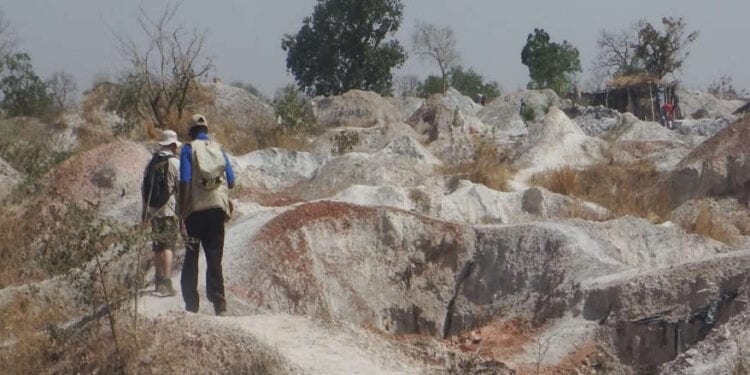Drilling Confirms Karst Target In West Mali
Marvel Gold Limited (ASX: MVL) has proved the existence of the karst and outlined the stratigraphy in its ongoing drilling programme at its Lakanfla Gold Project located in western Mali.
The first phase drilling programme commenced earlier this month, with eight holes for 1,653m out of a planned total of approximately 3,800m completed to date.
Executive Director Chris van Wijk said that encouragingly, the majority of holes drilled to date have intercepted karst horizons.
Karst horizons were found at various depths and thickness, some within the first 60m from surface and up to 60m thick.
Mr van Wijk said the presence of karsts (as a result of dissolution of carbonate rocks) explain the extensive gravity lows seen at Lakanfla and are an important proof of concept because the dissolution is thought to be responsible for upgrading lower level gold into a potentially economic supergene enrichment zone.
“We are encouraged that the rock types encountered by drilling to date have confirmed the presence of a karst at Lakanfla,” Mr van Wijk said.
“This is the first critical step in the Lakanfla deposit model being pursued by Marvel.
“Our remaining holes are spaced around the seven km strike of gravity lows that we now know exist due to karst formation and carbonate rock dissolution processes.
“We await the assay results in December to confirm whether these extensive karst horizons are mineralised.”
“The next step is assays from the drill program to confirm if the karsts are mineralised.
“There are a number of reasons to be optimistic about the mineralisation potential at Lakanfla:
* It is located 6km from Sadiola, one of Mali’s largest gold deposits;
* It is located on the Senegal Mali Shear Zone, a structure responsible for a substantial number of large- scale gold deposits;
*There are extensive artisanal workings targeting high-grade veinlets in metasediments to the north- west of Target Zone 1 (see Figure 4 further below); and
* The granite intrusion is mineralised, having been the focus area of historical drilling. Mr van Wijk said that due to the distance from the laboratory and the associated logistics of transporting the mass of samples collected during the program, the company plans to despatch all samples at the conclusion of drilling (now expected to be mid-November).











